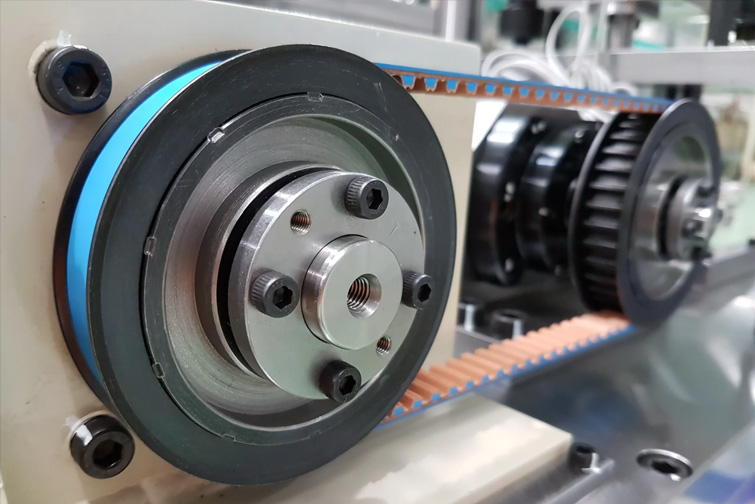We covered the importance of Timing Pulleys and belts in power transmission systems in our previous article. These parts work in tandem to precisely and effectively synchronize movement. This article will go over the various kinds of timing pulleys used in power transmission systems and how to select the best one.

The article will examine subjects like:
- How many types of timing pulleys?
- How can I choose the right belt to fit the timing pulley?
- Different kinds of pulleys in the power transmission system
How many types of timing pulleys?
Timing pulleys come in a variety of forms, each with unique advantages as well as disadvantages. The most typical kinds are:
- Keyless timing pulleys,
- Timing idler pulleys,
- D-hole synchronous pulley.
1-Keyless timing pulleys (Fig. 1) are the most common type. Made of steel or aluminum, they can be mounted onto a shaft without the use of set screws or keys, thanks to a taper design on the bore. Since keyless timing pulleys are movable, the belt's speed can be adjusted.
2-Timing idler pulleys (Fig. 2) have a pilot bore that is the same size as the shaft. They are secured to the shaft using set screws or keys and, once installed, cannot be removed easily. Timing idler pulleys are typically made from steel, stainless steel, or aluminum.
3-D-hole synchronous pulley (Fig. 3) is characterized by its D-shaped hole design, which is not only easy to install and position, but also ensures a tight fit with the shaft. A bushing that fits tightly with the shaft is usually installed in the D-shaped hole further to enhance the stability and durability of the connection.


